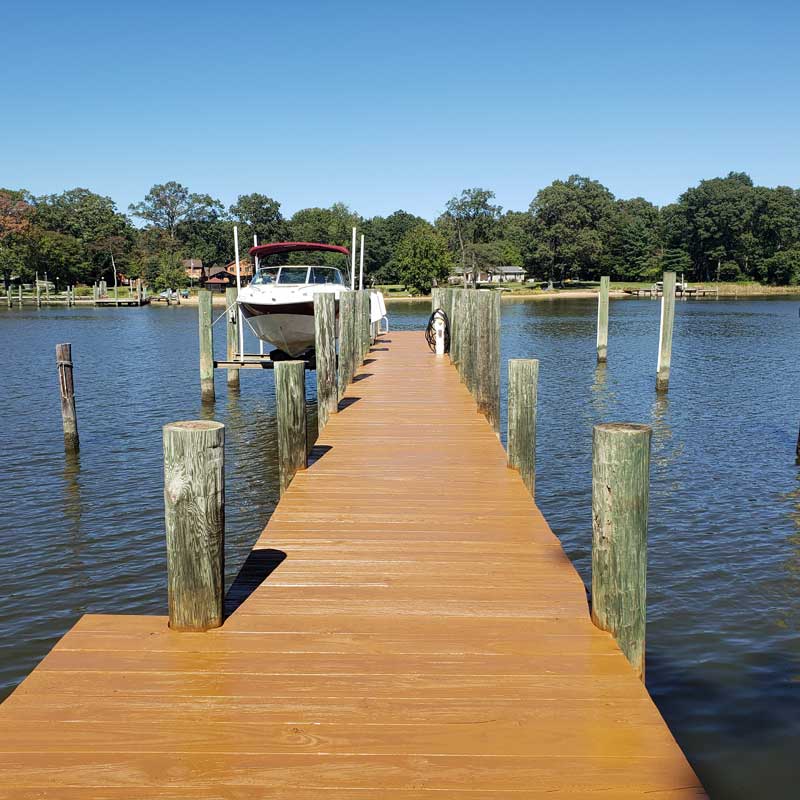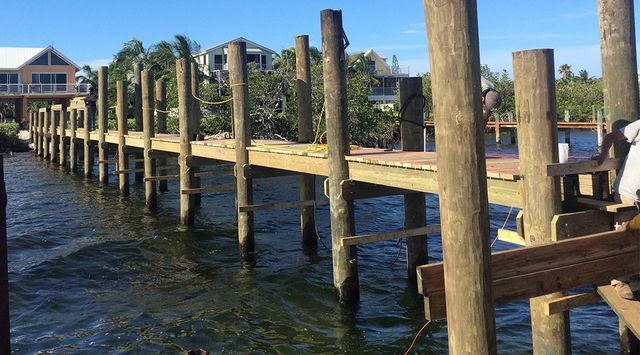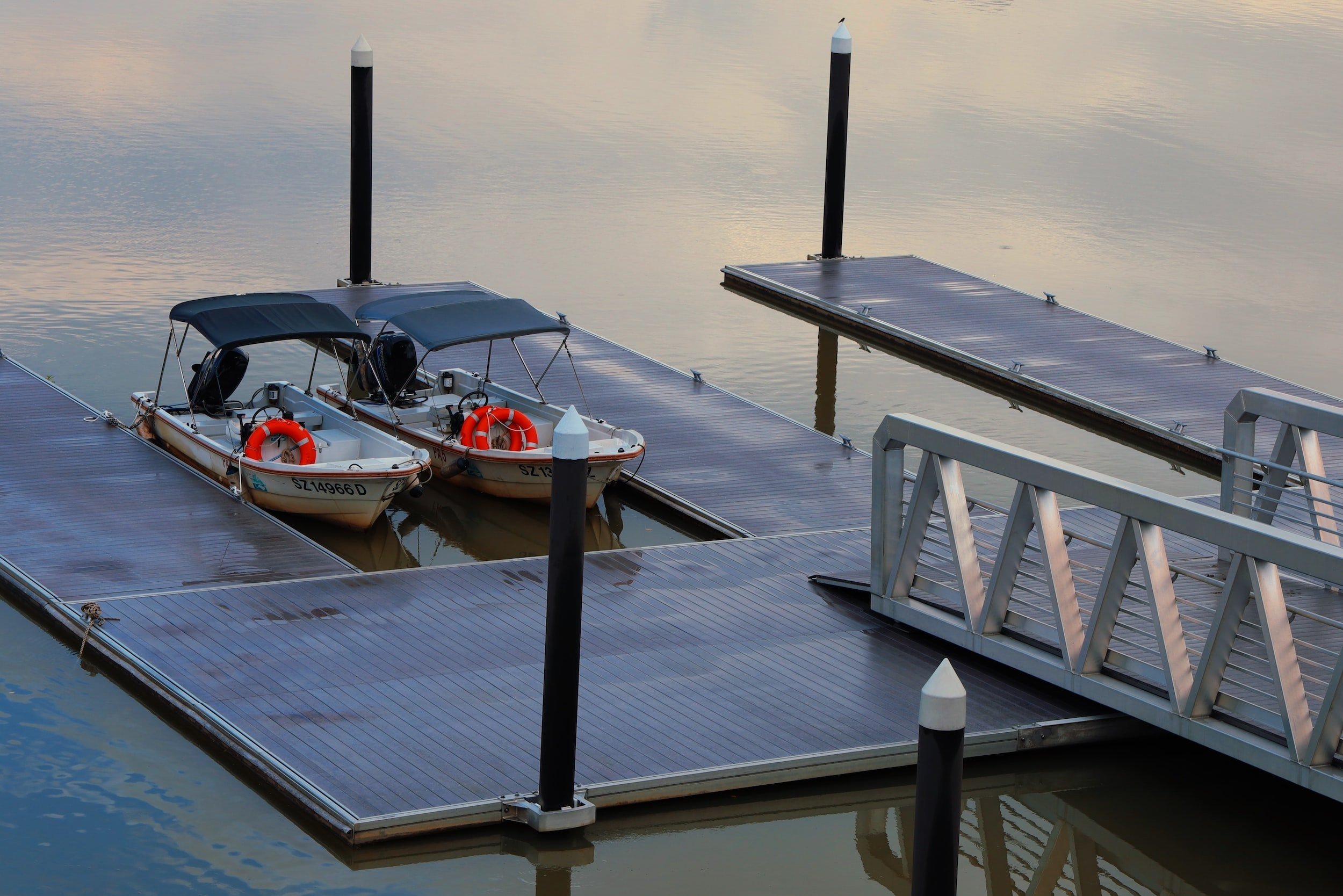DIY Tips for Simple Dock Repairs You Can Deal With
DIY Tips for Simple Dock Repairs You Can Deal With
Blog Article
Effective Dock Repair Service Techniques: Ensuring Architectural Stability
Making certain the architectural honesty of docks with effective repair methods is paramount for the durability and safety and security of marine centers. This entails a multi-faceted strategy beginning with detailed evaluations utilizing advanced modern technologies like sonar equipment and from another location ran lorries (ROVs) to find both visible and hid problems. Ultimately, picking the right repair materials, such as composite materials and corrosion-resistant alloys, is critical for resilience. Structural support methods, including the application of cross-bracing systems and load-distribution plates, play an important role in mitigating tension points. The value of these strategies comes to be obvious when discovering innovative repair work methods and preventative maintenance methods.
Analyzing Dock Damage
Assessing dock damages is a critical first step in making sure the architectural integrity and safety of any docking center. This initial evaluation involves a thorough assessment to determine both surprise and noticeable problems. Key aspects to examine include the dock's structure, pilings, decking, and hardware. Each element should be inspected for signs of wear, rot, rust, or various other kinds of degradation that could compromise the structural integrity.
Architectural engineers or qualified inspectors commonly perform these analyses making use of specialized devices and methods. Underwater assessments may employ sonar equipment or from another location operated vehicles (ROVs) to identify submerged damages. Over water, aesthetic examinations are matched by using wetness meters and various other diagnostic tools to reveal underlying issues not instantly noticeable to the nude eye.

Picking Repair Service Materials
Picking the ideal repair work products is an essential action in the dock restoration procedure, one that directly influences the long life and efficiency of the repaired framework. Material choice need to be driven by elements such as environmental problems, load-bearing requirements, and compatibility with existing dock elements. Timber is a traditional option for anchors due to its natural resilience and visual allure. Choosing the ideal type of wood, such as pressure-treated lumber or naturally rot-resistant varieties like cedar or teak wood, is vital to endure aquatic environments.
In enhancement to timber, composite materials are progressively popular because of their sturdiness and reduced maintenance needs. Compounds, normally made from a mix of plastic and timber fibers, supply superb resistance to rot, insects, and UV damage. For metal anchors, picking corrosion-resistant alloys such as galvanized steel or marine-grade aluminum is necessary to prevent rust and make sure architectural stability in saline water conditions.
Epoxy materials and marine-grade sealers are crucial for repairing cracks and sealing joints, providing a waterproof barrier and improving the dock's total toughness. By carefully choosing premium products, dock repair work can achieve resilient outcomes, thereby guarding versus future deterioration and making sure secure, reliable usage.
Architectural Support Methods
Efficient architectural support methods are crucial in making sure the stability and longevity of dock repair work. One basic approach includes using steel or composite reinforcement bars (rebar) within concrete frameworks. Rebar provides extra tensile stamina, avoiding splits and distributing lots a lot more uniformly. This technique is especially effective for anchors subjected to heavy tons or harsh ecological problems.
An additional necessary strategy is the application of fiber-reinforced polymers (FRP) These materials provide high strength-to-weight ratios and superb resistance to rust, making them ideal for reinforcing concrete or wood anchors. FRP can be applied in strips or sheets and bound with epoxy materials to improve structural integrity.
Supporting and securing systems additionally play a vital function in architectural support. Cross-bracing, making use of metal or wooden light beams, can combat lateral pressures, minimizing guiding and movement. Securing systems, such as helical piers or driven piles, provide a stable foundation by moving tons to deeper, more stable soil layers.
Finally, the assimilation of load-distribution plates can help distribute weight much more equally throughout the dock's surface area, mitigating localized tension factors. These techniques jointly make sure that anchors remain robust and secure, capable of withstanding the roughness of their functional environment.
Advanced Repair Service Methods

One more sophisticated method includes underwater welding, which enables repair work to be carried out without the need to dewater the area. This method is particularly advantageous for addressing architectural concerns in immersed dock elements, ensuring very little disruption to operations. Improved welding strategies, paired with robot systems, deliver accuracy and dependability, therefore prolonging the life expectancy of the dock.
In addition, cathodic security systems are carried out to avoid rust in metallic dock frameworks. By utilizing sacrificial anodes or amazed current systems, these strategies successfully reduce the electrochemical procedures that cause material deterioration.
Last but not least, advanced monitoring modern technologies, such as structural wellness tracking (SHM) systems, offer real-time information on the condition of dock frameworks. These systems allow proactive upkeep and timely treatments, ultimately making certain the long-lasting architectural stability of the dock.
Upkeep and Prevention
Upkeep and prevention are essential concepts that underpin the durability and safety of dock frameworks. Regular assessments are paramount, permitting early discovery of wear and tear, possible weaknesses, and environmental influences. A proactive technique, involving routine look for corrosion, rot, and structural changes, minimizes expensive repair services and prolongs the dock's operational life.
Safety nets More Help ought to consist of using protective finishings to steel components to defend against corrosion and making use of treated wood to withstand degeneration. In addition, ensuring appropriate drain and air flow can protect against water accumulation, which is a common root cause of architectural destruction. Including quality materials and adhering to producer guidelines during building and fixing stages additionally play crucial roles in enhancing toughness.

Training personnel in dock upkeep ideal methods guarantees consistent application of preventive actions. Leveraging technical developments, such as drones for evaluations and sensors have a peek at this website for real-time surveillance, can better boost maintenance initiatives. By focusing on maintenance and avoidance, dock owners can ensure architectural stability, operational safety and security, and economical management over the dock's life-span.
Final Thought
In verdict, maintaining the structural honesty of aquatic facilities requires thorough dock repair strategies. Advanced repair strategies, paired with normal maintenance practices, make sure the dock continues to be secure and operational under diverse environmental problems.
Making sure the architectural honesty of anchors via effective repair techniques is critical for the durability and security of marine facilities.Selecting the suitable repair work materials is a critical step in the dock restoration process, one that directly affects the long life and efficiency of the repaired structure.Effective structural support strategies are essential in making certain the security and durability of dock repair work. By prioritizing maintenance and avoidance, dock proprietors can guarantee structural integrity, functional security, and affordable management over the dock's lifespan.
In verdict, preserving the structural integrity of aquatic centers demands thorough dock repair service methods.
Report this page